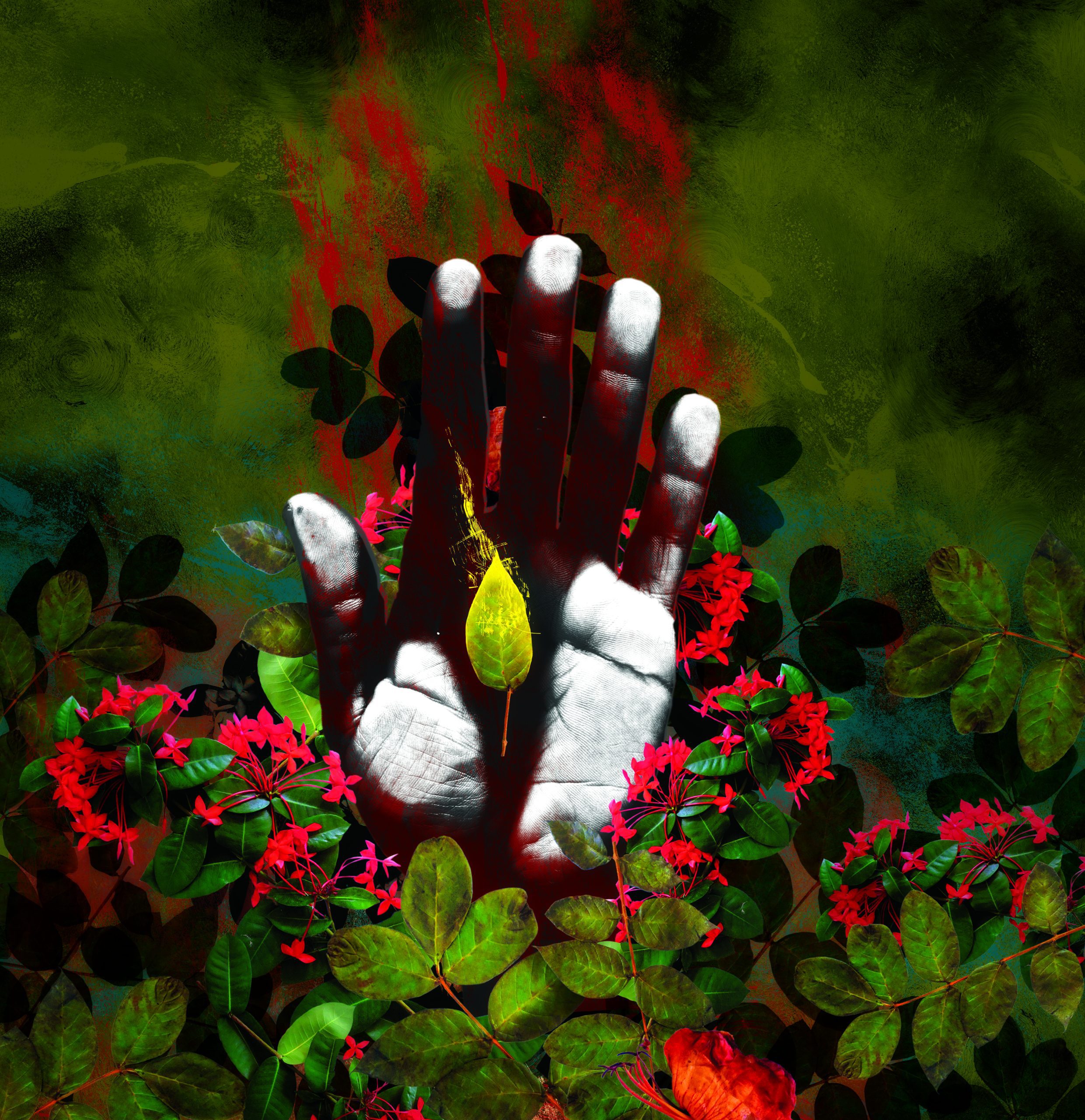ARTISTIC FREEDOM
UNCENSORED GALLERY
Index commissions censored and exiled artists and illustrators from around the world
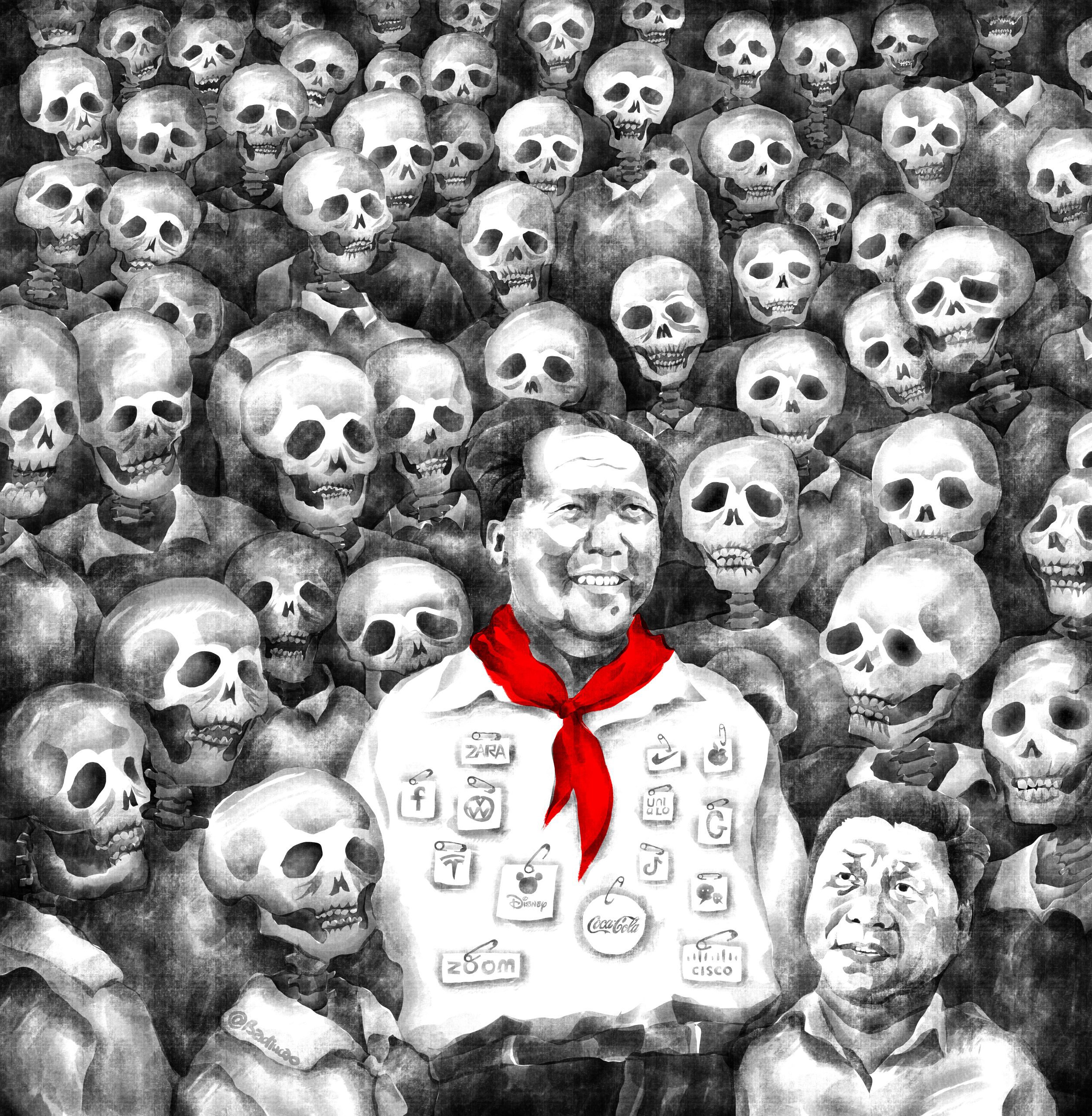
Badiucao
Badiucao
Badiucao calls himself a “Chinese Aussie artist hunted by the Chinese Government”. It is easy to see why he says that.
Born in Shanghai, Badiucao was training to be a lawyer when he first became a convert to activism.
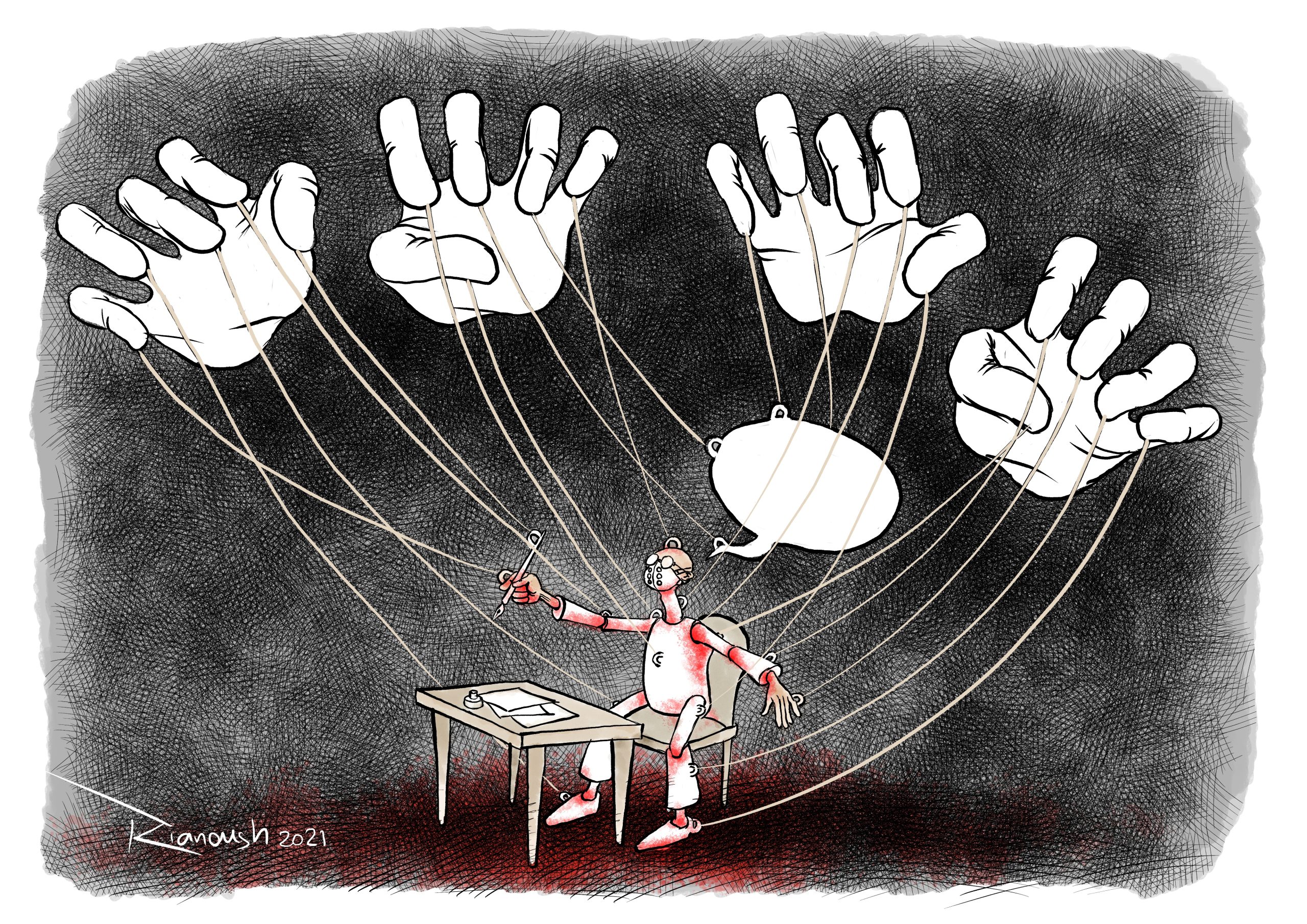
Kianoush Ramezani
Kianoush Ramezani
Born in 1973, Kianoush Ramezani is an Iranian artist, cartoonist, and human rights activist, who left Iran due to his involvement in Iran's Green Movement and his position in the Cartoonists' Rights Network International (CRNI). He has taught many courses and delivered lectures on the cartooning process, freedom of expression, and human rights.
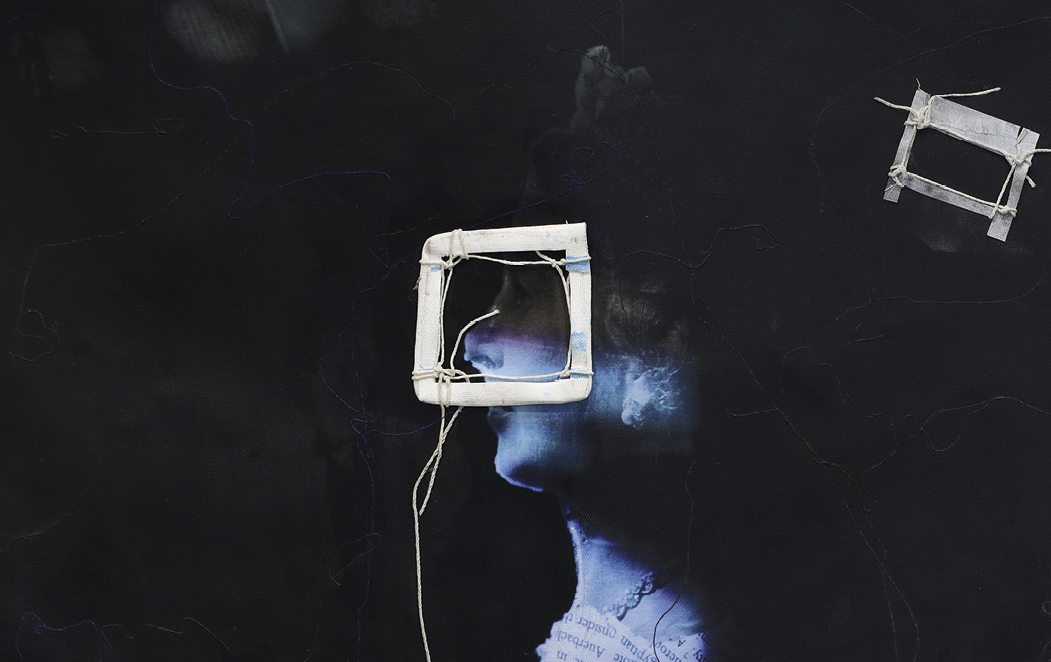
Eria Nsubuga
Eria Nsubuga
Eria Nsubuga (https://twitter.com/saneart), from Uganda, is a postdoctoral fellow at Rhodes University in South Africa and completed his PhD at the Winchester School of Art in 2021. His work explores metaphors of borders and invented nation-states. He has held exhibitions in the London, Shanghai, Paris, Milan and Amsterdam among others.
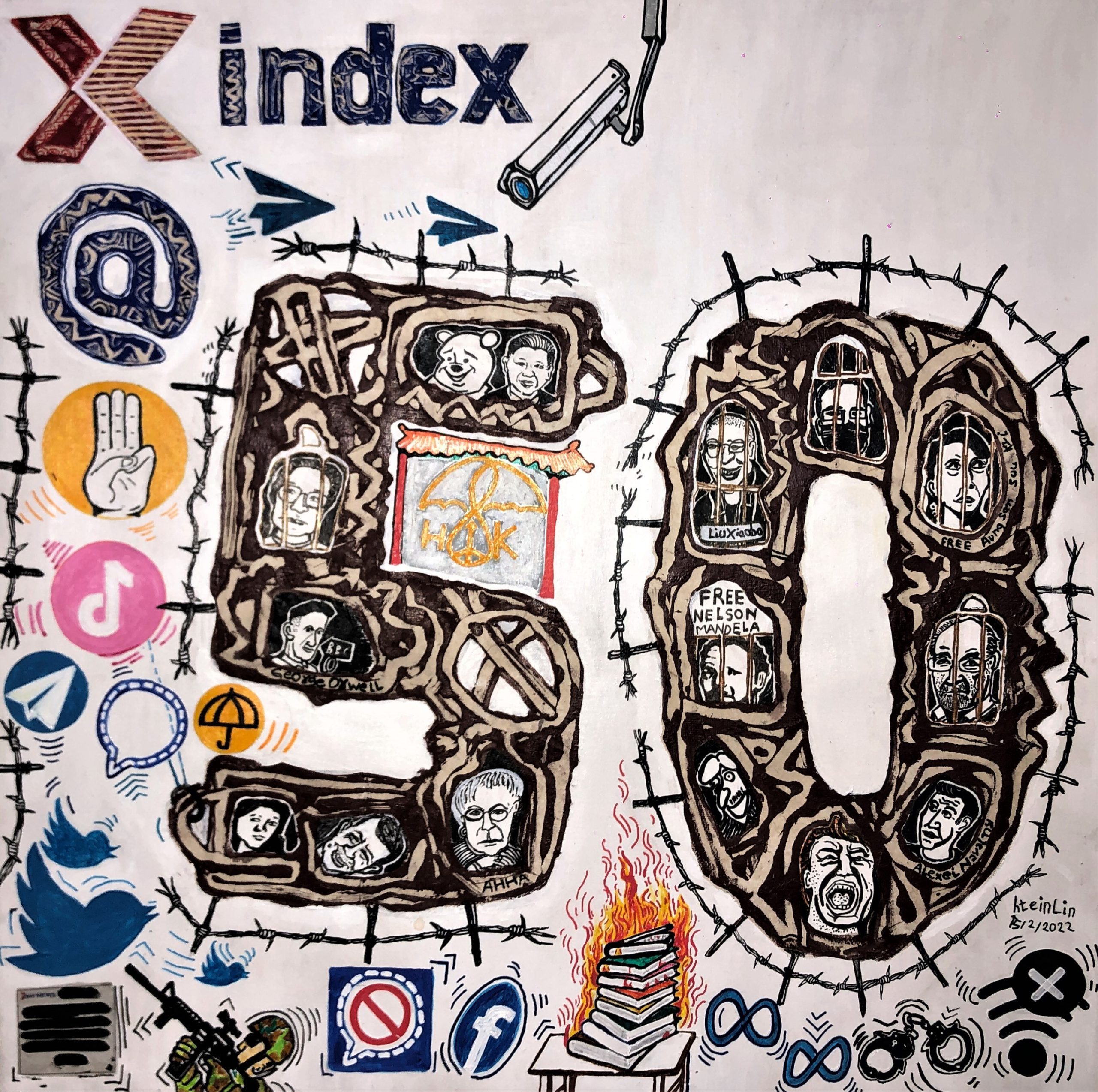
Htein Lin
Htein Lin
Htein Lin, artist and former political prisoner (1998-2004) and former Advisory Committee member of Index, has created this painting for our 50th anniversary in the style of his ‘ How do you find…..?’ series. Through the series he has previously observed London, Belfast, Venice, Barcelona and Amsterdam through his Myanmar eyes, identifying, connecting and adapting cultural references.
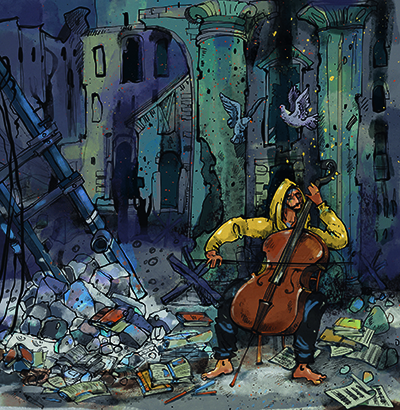
Irina Potapenko
Irina Potapenko
Irina Potapenko is an illustrator and cartoonist from Ukraine. "I live in a city by the sea called Odessa. For many years I have been illustrating books for children and adults and painting watercolors," she says.
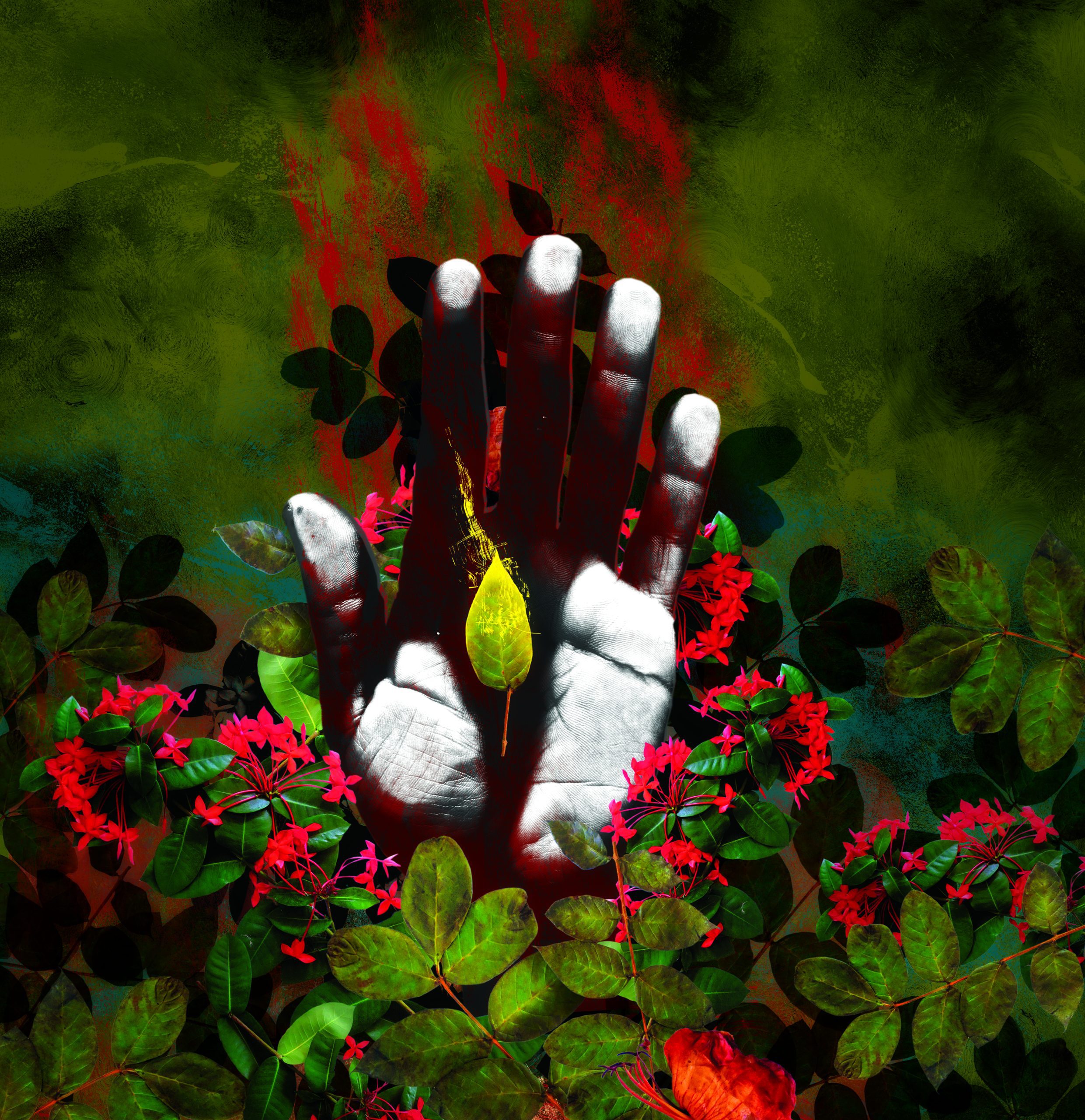
Wilson Borja
Wilson Borja
Wilson Borja (www.wilsonborja.com) was born and raised in the Colombian capital Bogotá. He studied graphic design and after graduation worked in illustration and animation for twelve years before taking a masters at the University of Arkansas.
Today, Borja combines his illustration work with teaching at the national University of Colombia and running a small studio LaCimbra with a couple of friends.
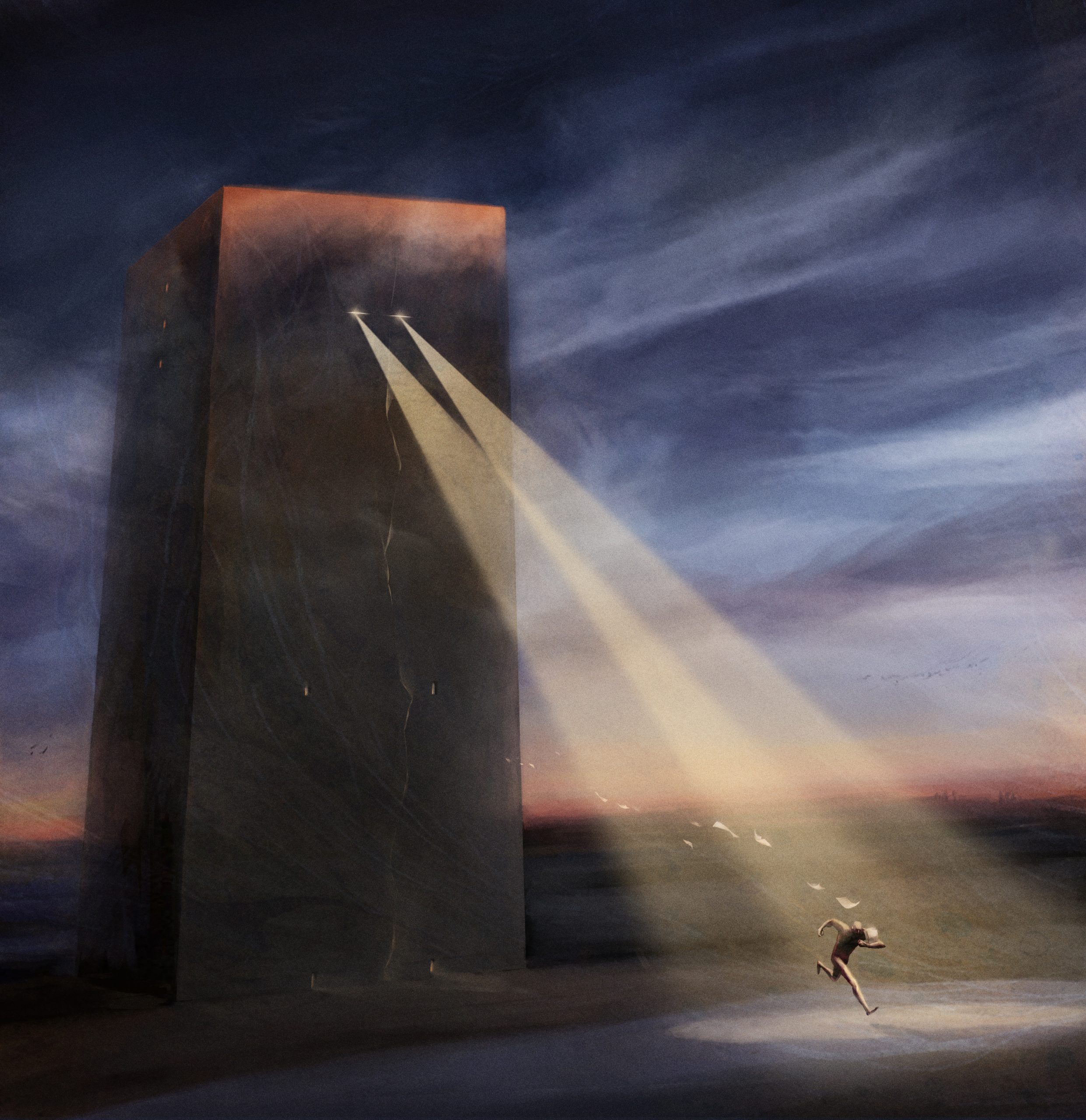
Tatyana Zelenskaya
Tatyana Zelenskaya
Tatyana Zelenskaya was born and grew up in Bishkek, the capital of Kyrgyzstan.
"I have been painting for as long as I can remember, and after school I studied art at the National Academy of Arts of the Kyrgyz Republic. I majored in industrial graphics, but preferred to work in more creative direction, illustration, animation, poster and contemporary art," she says.
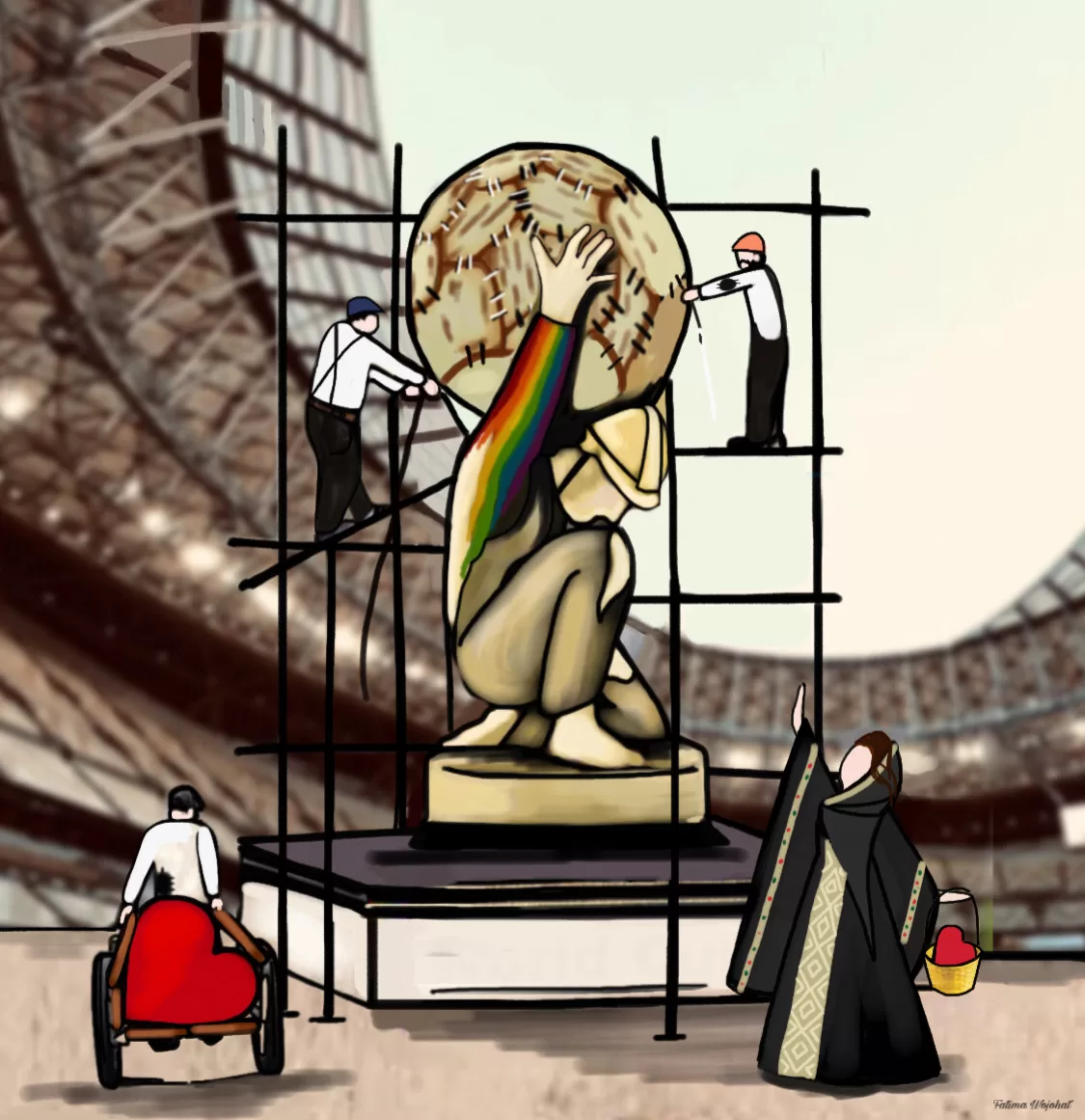
Fatima Wojohat
Fatima Wojohat
Fatima Wojohat was 19 when the Taliban retook Afghanistan. After the Taliban imposed restrictions on women, she started creating artwork on her smartphone; she is self-taught.
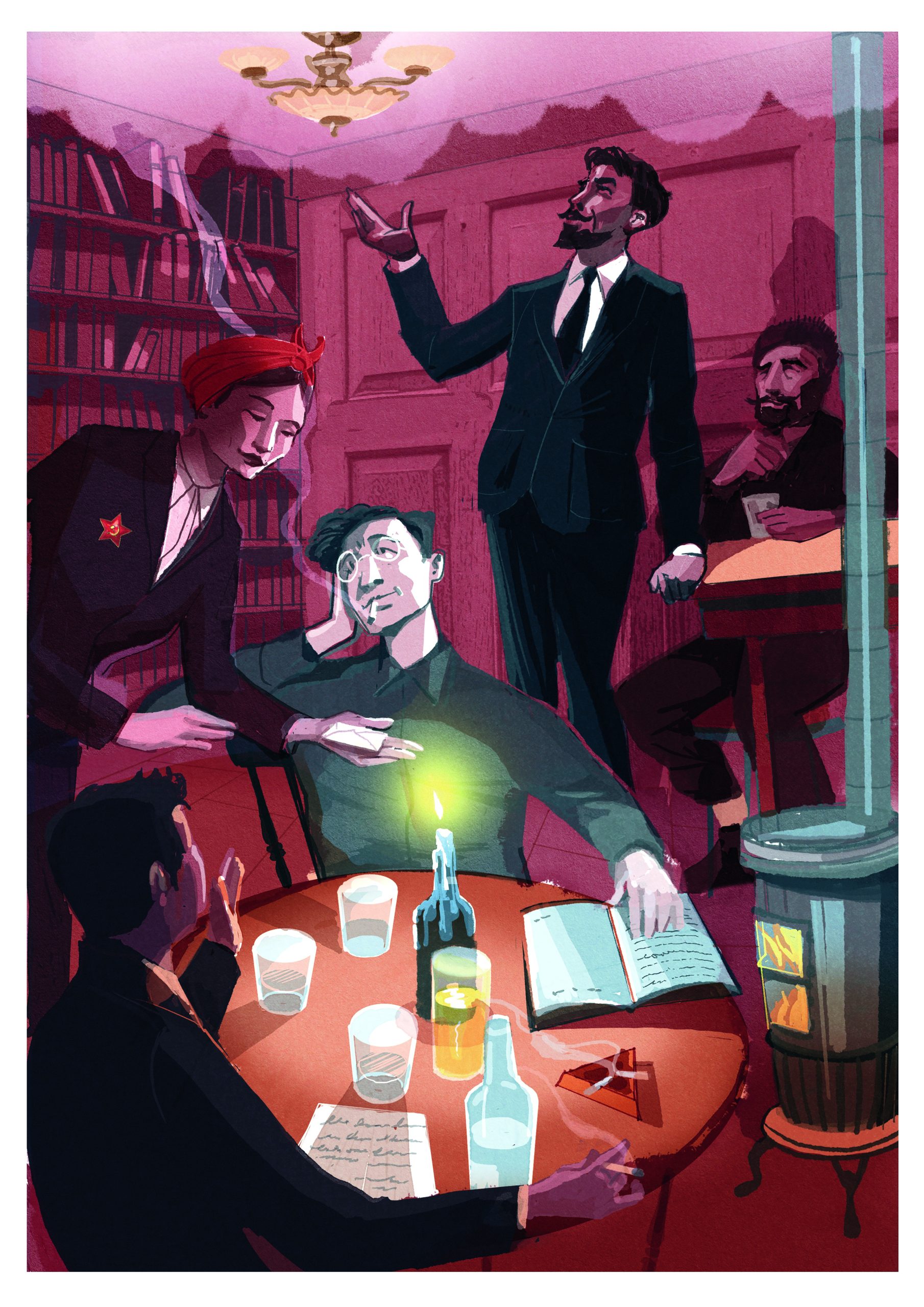
Alex Green
Alex Green
Alex Green has been working as an illustrator for more than 20 years, creating rich and thoughtful pieces with a combination of hand drawing, collage and digital techniques.
Badiucao calls himself a “Chinese Aussie artist hunted by the Chinese Government”. It is easy to see why he says that.
Born in Shanghai, Badiucao was training to be a lawyer when he first became a convert to activism.
He was watching a pirated Taiwanese film with friends and, unbeknown to them, the film had the Tiananmen documentary The Gate of Heavenly Peace spliced into it and the die was cast.
Later, recalling the incident to AFP, he said, "It was three hours, everybody just sat there and the room was completely dark, nobody even got up to turn on a light.”
None of them had ever heard of the Tiananmen Square incident or its horrific conclusion thanks to Chinese censorship.
He emigrated to Australia in 2009, abandoning his plan to become a lawyer. After his arrival, he worked as a kindergarten teacher while he studied for a master’s degree in education. He began using his artistic talent sin his spare time and, in 2011, starting drawing political cartoon, becoming a nagging thorn in the CCP’s side.
Badiucao had no formal art training in China but comes from a long line of creatives - his grandfather and great uncle were filmmakers in China who paid for their work with their lives in the 1950s.
Badiucao’s art is typified by the clever reworking of Communist propaganda imagery, subverting it to criticise the CCP and using the bold red and yellow of the Chinese flag. His work uses dark humour and clever word-play to skewer China’s leaders.
Badiucao’s illustration for the cover of she spring 2021 issoe of Index on Censorship magazine is typical of his work – striking and with a strong message to those who gaze upon it, reminding us of the West’s complicity in China’s rise to power.
Eria Nsubuga (https://twitter.com/saneart), from Uganda, is a postdoctoral fellow at Rhodes University in South Africa and completed his PhD at the Winchester School of Art in 2021. His work explores metaphors of borders and invented nation-states. He has held exhibitions in the London, Shanghai, Paris, Milan and Amsterdam among others.
His work for Index (Shadow of turning/Elizabeth on the cover and Commonstealthiness) looks at the theme of legacies of Empire. His mixed media collages pull together images of Queen Elizabeth II and excerpts from a book by the British missionary Reverend John Roscoe entitled The Baganda: An account of their native customs and beliefs.
“I use thread as symbolic connections and entanglements within notions of fictional commonwealths and marginal spaces,” said Nsubuga.
Irina Potapenko is an illustrator and cartoonist from Ukraine. "I live in a city by the sea called Odessa. For many years I have been illustrating books for children and adults and painting watercolors," she says.
When the war started, Potapenko began to paint it too.
She says, "I use allegories in my paintings. I want to tell people from all over the world about this war. There are bombs and rockets destroying our cities. My husband and me hide in the basement with our pets. Painting helps me maintain mental strength. I have painted a cellist, who plays in the city ruins. I wanted to show with this picture that cities get ruined but art is eternal."
Fatima Wojohat was 19 when the Taliban retook Afghanistan. After the Taliban imposed restrictions on women, she started creating artwork on her smartphone, she is self-taught, and now work with the ArtLords 'artivist' movement.
The illustration focuses on issues surrounding Qatar’s hosting of the World Cup, including the suppression of workers’ and women’s rights.
There is hope though. She says, “The purpose of drawing hearts in my artworks is to be a light in the darkness. I dream my beautiful world because I am a dreamer.”
Wilson Borja (www.wilsonborja.com) was born and raised in the Colombian capital Bogotá. He studied graphic design and after graduation worked in illustration and animation for twelve years before taking a masters at the University of Arkansas.
Today, Borja combines his illustration work with teaching at the national University of Colombia and running a small studio LaCimbra with a couple of friends.
His recent work has been inspired by the African diaspora and the phenomenon of migration and his last exhibition pre-Covid at Bogotà’s African Diaspora Gallery in 2019 was focused on this topic.
Borja likes to mix digital and physical elements in his work. This issue’s cover illustration includes plant species Borja personally collected from the Pacific coast of Colombia, where most of the population is of African descent.
Alex Green (www.alexgreen-illustration.co.uk) has been working as an illustrator for more than 20 years, creating rich and thoughtful pieces with a combination of hand drawing, collage and digital techniques. Focusing on the subtleties of body language, his empathetic approach has worldwide appeal; from editorial, design and advertising industries, to live events and murals. Most recently, he has begun to enhance his work with delicate movement, bringing small moments to life as animated gifs.
Born in 1973, Kianoush Ramezani is an Iranian artist, cartoonist, and human rights activist, who left Iran due to his involvement in Iran's Green Movement and his position in the Cartoonists' Rights Network International (CRNI). He has taught many courses and delivered lectures on the cartooning process, freedom of expression, and human rights. He has also founded and curated several cartoon expositions in France to support human rights in Iran and exiled international journalists. Ramezani received the first International cartooning award of 2012 from Kofi Annan and the mayor of Geneva. Ramezani’s cartoons have appeared regularly on Iranian websites such as "Khodnevis","Nabz-Iran","Iranian", etc. and in International publications and media such as "Courrier International", "Arte" and "TV5 Monde" website. Ramezani has lived in France since 2009 as a political refugee.
Tatyana Zelenskaya was born and grew up in Bishkek, the capital of Kyrgyzstan.
"I have been painting for as long as I can remember, and after school I studied art at the National Academy of Arts of the Kyrgyz Republic. I majored in industrial graphics, but preferred to work in more creative direction, illustration, animation, poster and contemporary art," she says.
"Although I received a conservative art education, I have been drawing digitally on a graphics tablet for many years now. Sometimes, when I can find time, I draw on paper using charcoal and sanguine."
"The most common themes in my work are feminism, violence and human rights," she says.
"I consider myself sensitive to injustice in general, it's part of my character. There are a lot of social problems in Kyrgyzstan, and I think the family is a place where one should have security, a refuge from the injustices of society. But for women it is the family that turns out to be the most insecure place. It seems terribly unfair to me, especially since women do so much in the country, but there are only men in positions of power who are comfortable with this state of affairs."
Zelenskaya’s illustrations have been featured by Amnesty International, as well as smaller organisations. Numerous Kyrgyzstani news outlets have published Zelenskaya’s work, such as Kloop or Current Time. On 8 March 2020, she was arrested while participating in a peaceful march on International Women’s Day.
Htein Lin, Myanmar, artist and former political prisoner (1998-2004) and former Advisory Committee member of Index, has created this painting for our 50th anniversary in the style of his ‘ How do you find…..?’ series. Through the series he has previously observed London, Belfast, Venice, Barcelona and Amsterdam through his Myanmar eyes, identifying, connecting and adapting cultural references.
In this piece, the 50 is printed on Shan mulberry leaf paper using the monotype technique he developed during his six-and-a-half years in prison, painting with his fingers on scraps of plastic and printing onto white prison uniform. Tucked into the cells in the numbers are iconic images of censorship and the censored: Xi Jinping and Pooh Bear, Myanmar writer and prisoner Win Tin, George Orwell, Anna Politkovskaya, Vaclav Havel, and Ma Thida, friend, Myanmar writer, former prisoner, and current Chair of PEN’s Writers in Prison Committee. Dr Li Wenliang, silenced for exposing the early days of Covid, Liu Xiaobo, Nelson Mandela, Aung San Suu Kyi and Alexey Navalny rub shoulders with Donald Trump and a Charlie Hebdo cartoon.
Around the figures, festooned with barbed wire, flutter the icons of social media and internet shutdown, and more traditional images of censorship such as redaction, book burning, arrest and murder.
Lin continues to live and work in Myanmar, after a spell in the UK, and remains committed to freedom of expression. He is a founding member of the Association for Myanmar Contemporary Art (AMCA) whose planned launch date of 1 February 2021 had to be postponed because of an unexpected military coup.
Be the first to hear from uncensored writers and artists
For over 50 years, Index has published work by censored writers and artists. Subscribe below to get regular updates from our incredible contributors.

